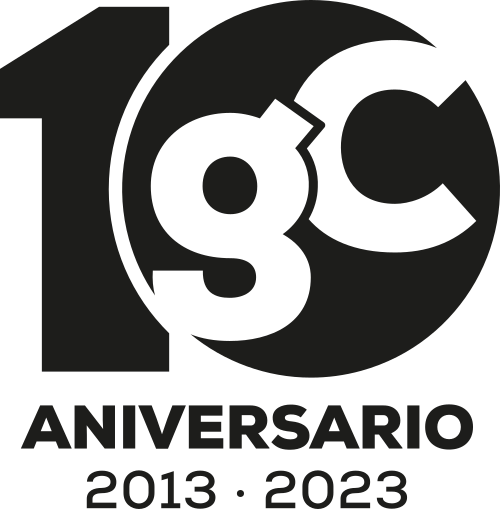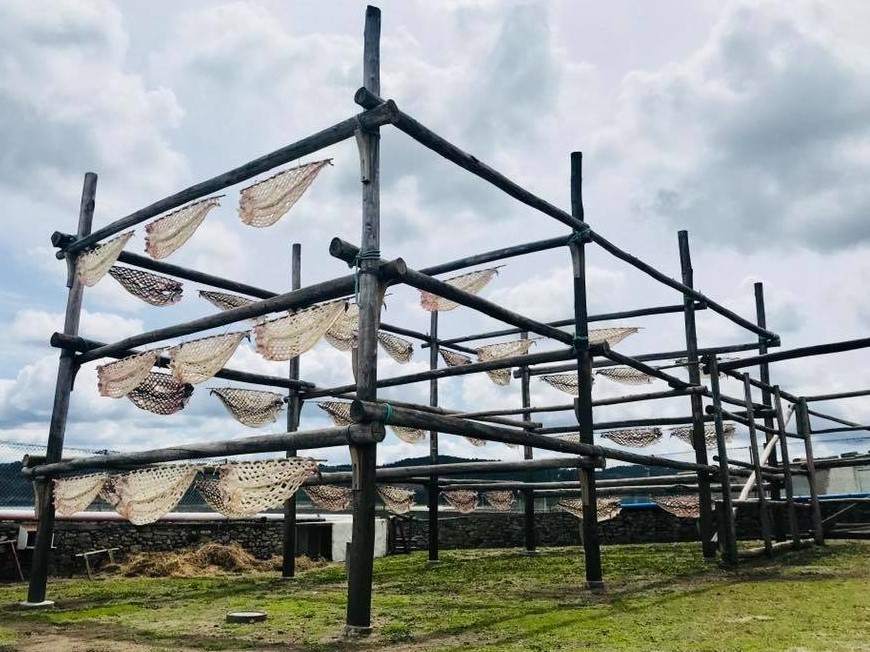In the town of Muxía (A Coruña), exposed to the action of the Atlantic winds of the Costa da Morte, two peculiar wooden structures are preserved: the unique cabrias (winches) for curing the conger. They are the only ones in the entire Iberian Peninsula that remain standing today, and have witnessed intense commercial activity that placed large quantities of this unique product in distant inland lands. Despite the fact that today it still resists some entrepreneurial initiative, the artisan production process and its secrets are in danger of disappearing.
Next to the rough sea of the Costa da Morte, the drying houses of Os Cascóns and A Pedriña are the last material traces of a tradition, historically, it also developed in other points of the Galician coast, such as in the bays of Vigo and Corcubión . The main destination of the Galician conger was Calatayud, an Aragonese town that today continues to be the main demand for this unique product.
Lemar Elaboraciones Artesanas is an initiative launched by Javier Lema and Carla Castro based on the production and commercialization of dried conger in different presentations, but always respecting the artisanal process. According to Castro, with this project he decided to take over from the drying activity that Javier’s parents, who worked on the winch, had been developing so that “tradition would not be lost”.

Innovation & tradition
Castro emphasizes that the artisanal method that is maintained during the production of his dry eel, working the pieces “one by one”. But, based on tradition, it is also necessary to adapt to new times and health requirements. In this sense, the company no longer carries out the drying in the open air in the traditional winch –which was done taking advantage of the action of the northeast wind-, but instead uses a special chamber that works as “a giant dehumidifier”. In it, the levels of humidity, temperature and quality are controlled.
On the other hand, in Lemar tradition is also a starting point to innovate in presentations. These Muxian entrepreneurs have just added a new proposal to the usual pieces of dried conger (which they sell preserved in a vacuum): conger escales, packed in a glass jar. This innovative product, made from zest, gives a new life to the dried eel, admitting new uses and culinary proposals.
This elaborate can be used in croquettes or as a condiment to flavour foods. “It was an idea that I came up with… And it turns out that people like it” he says. The reception of the scales has been so good that “there are even people who eat them directly with the spoon”, she says.
In addition to the activity of drying and processing, Lema and Castro also work the conger from their restaurant located in the town of Muxía, where this fish can be found along with other seafood and seasonal products. There, the conger eel is present in the offer and, indirectly, also in the very name of the establishment: A Furna (that’s how the sea caves where these large fish sound to inhabit are called).
Muxía-Calatayud: a gastronomic connection
The main destination of the dried fish from Muxía is the province of Zaragoza, the place where 80% of what is produced goes. Calatayud has a tradition of more than five centuries of consumption of this product (the first reference dates from 1446) that allowed its conservation in good conditions despite the long journey that the transfer from the production area to the consumption area involved.
The traditional gastronomic repertoire form this town located in Aragon includes various ways of preparing it, especially in stews and pot meals: conger eel with chickpeas or with potatoes are some of the best known recipes. Taking into account these types of culinary applications, it is not surprising that the best time of sale of the product is winter.
But, where does this deep-rooted consumption of Galician dried fish come from in the inland? Tradition speaks of the fact that, already in the Middle Ages, the bilbilitanos – great rope makers – brought ropes for the Muxía ships and, as payment in kind, brought back to Calatayud pieces of conger eel from the drying rooms on the Muxian shore.

For now, the investigation has not found documentary references on these specific exchanges of which the tradition speaks. This is indicated by the work entitled “Historical information on the supply and consumption of conger eel in the city of Calatayud” -prepared by the Archive of the town in 2014-, in which it is noted that “the frequently reiterated statement that from the workshops of ropes from Calatayud part of their production was exported to the Galician ports, taking advantage of the return of the muleteers who transported conger eel and other fish in demand in Calatayud, it has not been possible to document it ”.
The main destination of the dried eel from Muxía is the province of Zaragoza, which accounts for 80% of the production
What documentary evidence does exist is that of the historic activity linked to the export of hemp (unprocessed) and the import of conger, having a special preference (and paying better prices) for Galician fish compared to others such as that of Brittany. This good reputation for the quality of Galician produce seems to have survived until today, as the dried eel from Muxía has become a successful gourmet proposal among palates accustomed to strong flavours.
Muxía, last bastion
Although the dry conger is the modality that triumphs in the traditional gastronomy of Calatayud, in Muxía the habitual consumption of this fish is fresh, admitting a multitude of tasty preparations that range from baked fish to caldeiradas. Even so, in some establishments in the Coruña town it is also possible to purchase the dried product.
Muxía is today the last bastion that guards the secular tradition of the Galician dry conger, although the work to preserve it is not without obstacles. According to Castro, the production process is tough (the pieces are large and must be handled by hand).
It is also difficult to widen the gap that the product has in the market: its flavour is very peculiar, due to its intensity, and the type of preparations that it admits require time and some foresight. “Before cooking, the dried eel should be hydrated between 48 and 24 hours but, in general, today the pace of life is fast and people do not have as much time to dedicate to food”, he points out.

In view of all these conditions and difficulties, Carla Castro predicts that tomorrow there will probably be no one to take over the business. “I sincerely believe that we will be the last”, she confesses.
However, from difficult moments, opportunities can always arise. Taking into account the characteristics of this tasty delicacy from the Costa da Morte, its ancient tradition and the preparation possibilities it offers, its survival could come from the hand of some very specific consumer profiles: people who love authentic flavours, who are committed to gourmet products and defenders of slow cooking and slow food.














